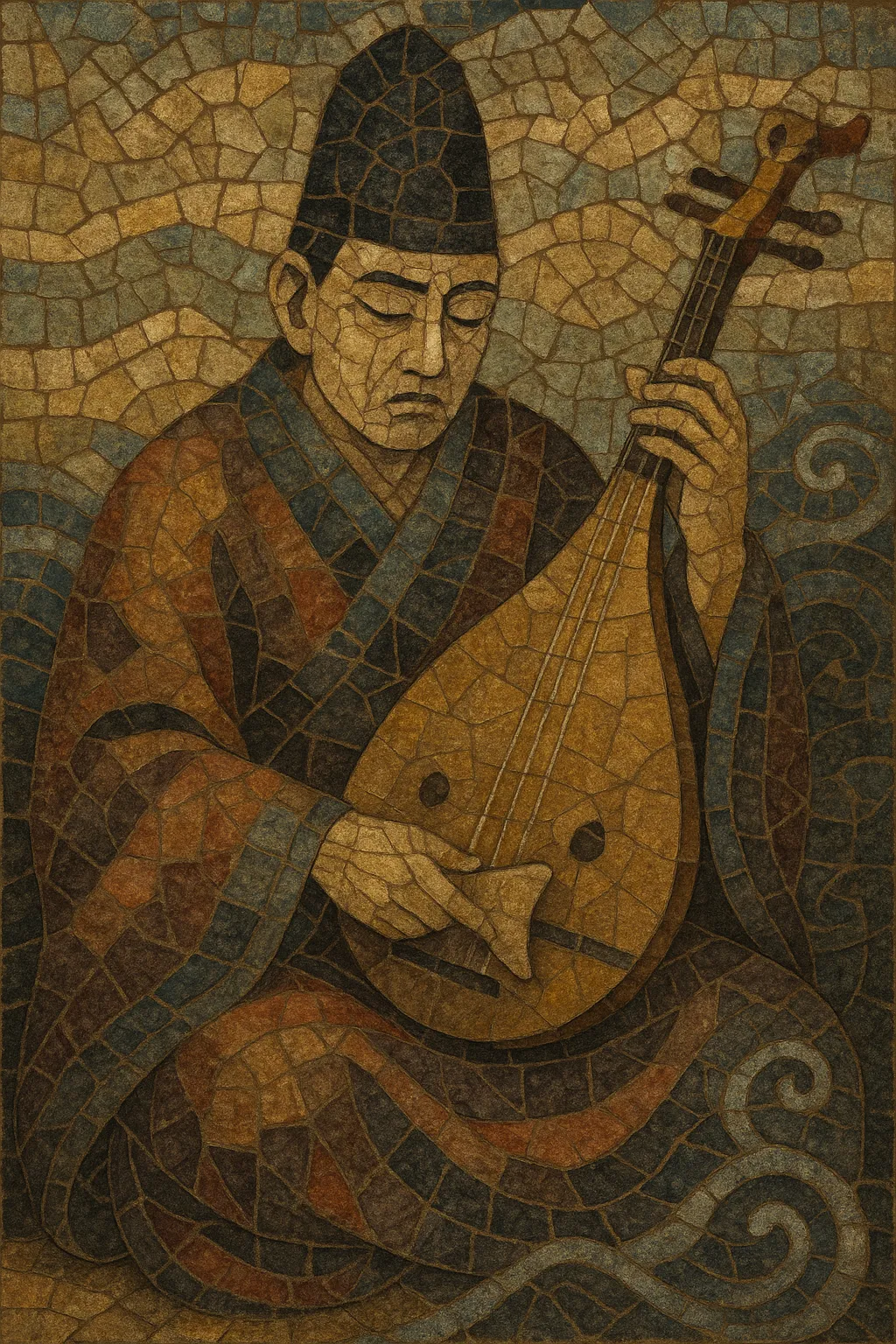Heikyoku (平曲) is the medieval Japanese art of epic chanting of the Tale of the Heike, performed by blind itinerant lute priests known as biwa hōshi. The voice delivers a highly stylized, declamatory chant closely synchronized with a four‑string heike‑biwa, whose plectrum strikes and drones punctuate phrases and heighten drama.
The genre blends Buddhist liturgical chant aesthetics with courtly melodic sensibilities, using flexible rhythm, formulaic melodic patterns, and codified cadences to narrate the rise and fall of the Taira clan. Its sound world is austere, spacious, and timbrally rich—relying on silence (ma), timbral inflection, and the biwa’s distinctive buzzing resonance (sawari) rather than dense harmony.
Heikyoku emerged in the Kamakura period as blind monk‑musicians (biwa hōshi) developed a chant style to recite and memorialize the events of the Genpei War. Drawing on Buddhist shōmyō (liturgical chant) for vocal declamation and on courtly aesthetics familiar from gagaku, they fashioned a narrative music that prioritized text intelligibility, ritual gravity, and timbral nuance.
By the 14th century, the tradition was codified alongside the Kakuichi-bon text of the Tale of the Heike, attributed to the biwa hōshi Akashi no Kakuichi. Performance practice crystallized into recognizable melodic formulas, cadential types, and sectional organization (dan). Professionalization was tied to the Tōdōza (guild of the blind), which trained and licensed performers and safeguarded transmission through lineages.
During the Edo period, newer biwa styles (notably satsuma-biwa and chikuzen-biwa) and burgeoning shamisen-based narrative genres (various forms of jōruri) drew audiences away from the older heikyoku style. Nonetheless, heikyoku remained a revered, ritualized practice and a key source for later narrative music and theatre traditions.
Although public popularity declined, the genre persisted through dedicated masters and cultural preservation efforts. Contemporary performers and scholars have revived interest via recordings, academic editions, and concert presentations, emphasizing its historical role, vocal techniques, and unique biwa timbres. Today, heikyoku is recognized as a cornerstone of Japanese narrative music and a vital link between Buddhist chant, courtly aesthetics, and later theatrical musics.


